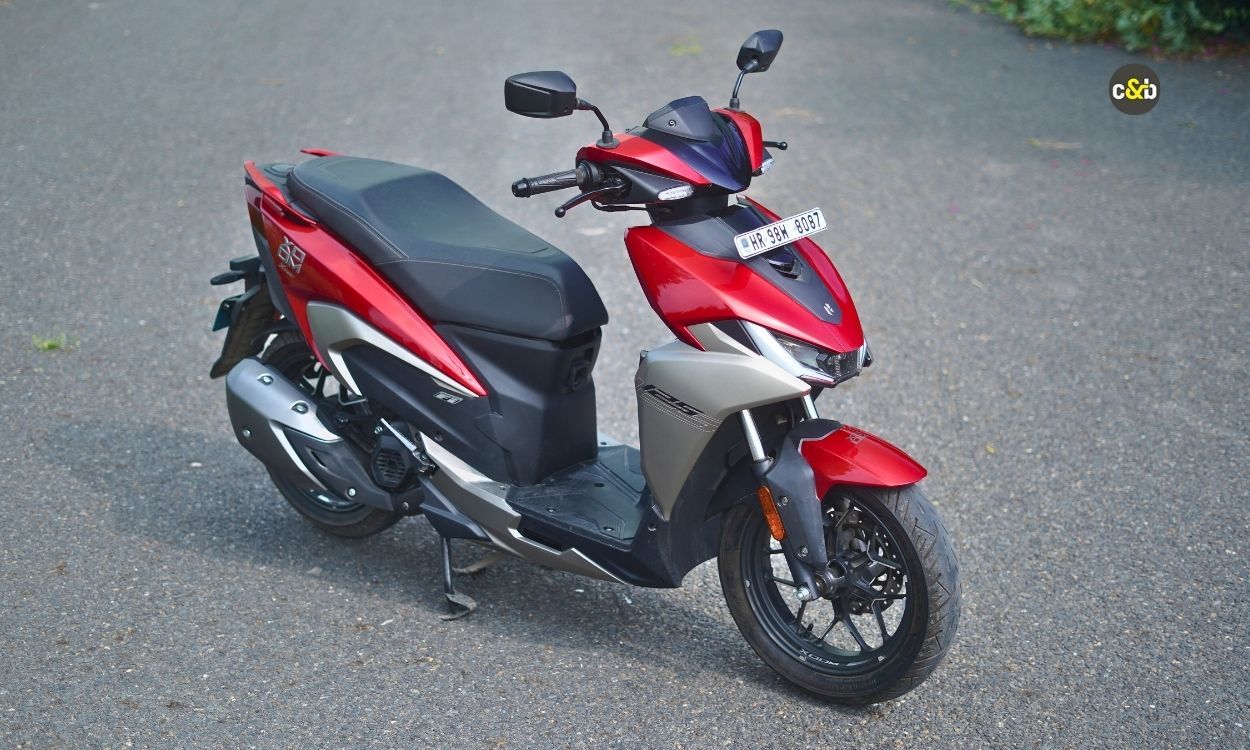The Skyhawk’s five hardpoints could carry a variety of missiles, bombs, and other munitions.
BHPian skanchan95 recently shared this with other enthusiasts:
1:72 Skyhawk, Blue 55, VF-126 “Bandits”, Bu No. 151095 US Navy Fighter Weapons School TOP GUN, NAS Miramar, CA, 1985
Designed to replace the antiquated, propeller-driven Douglas A-1 Skyraider, the A-4 Skyhawk was first flown on June 22, 1954. Douglas exceeded the original design requirements by delivering a carrier-capable aircraft that was only half the Navy’s weight specification and so compact that it did not need folding wings. The A-4 was the first to use “buddy” air-to-air refueling (an A-4 could refuel other aircraft of the same type), which was helpful when operating in remote locations where dedicated tankers were impractical. The A-4 served the US Navy until 2003 and remained the preferred warplane for the Marine Corps until the 1980s, even after the introduction of the A-7 Corsair II.
The A-4 Echo (A-4E) was major upgrade over the earlier B & C Skyhawk variants. The A-4E had the new Pratt & Whitney J52-P-6A engine with 8,500 lbf (38 kN) of thrust, strengthened airframe with two more weapon pylons (for a total of five), improved avionics, with TACAN, Doppler navigation radar, radar altimeter, toss-bombing computer, and AJB-3A low-altitude bombing system. Many later upgraded with J52-P-8 engine with 9,300 lbf (41 kN) thrust. A total of 499 A-4Es were built.
The Skyhawk’s five hardpoints could carry a variety of missiles, bombs, and other munitions. It could carry a bomb load equivalent to that of the World War II-era Boeing B-17 bomber, and could deliver nuclear weapons using a low-altitude bombing system and a “loft” delivery technique. It pioneered the concept of “buddy” air-to-air refueling, which reduces the need for dedicated aerial tankers. The Skyhawk was originally powered by the Wright J65 turbojet engine; from the A-4E onwards, the Pratt & Whitney J52 engine was used instead.
A-4 & USNFWS(Top Gun)
In an effort to improve the poor performance of US Navy F-4 aircrews in Vietnam, the USN Fighter Weapons School(USNFWS) was established in 1969 at NAS Miramar, California. The first aircraft used by the school to teach the F-4 pilots better tactics were the A-4 Skyhawk and the F-5 Freedom Fighter.The A-4 and its TA-4 trainer sibling, with their small size and impressive agility, could pass for the MiG-17. The similarly-sized Northrop F-5 Tiger II, with its supersonic performance, made a fairly good replacement for the MiG-21.
The A-4 was used by Top Gun to simulate the handling characteristics of Soviet MiG-17 and MiG-21 aircraft, which were common adversaries during the Cold War. This helped US Navy pilots develop tactics for dealing with these types of aircraft. The A-4 was known for its agility and relatively low cost, making it a good choice for training and development of advanced air combat tactics. The A-4s used in Top Gun were often modified, such as the Blue Angels variants, which were stripped of some electronics and weapons systems to make them lighter and more agile
A-4E Bu.No. 151095 s/n Blue 55 c/n 13265 was flown by Lt. “Pyro” Hendricks at the Top Gun School and this same aircraft was used in the movie Top Gun as the A-4 of Top Gun Instructor- Lt. Cdr Rick “Jester” Heatherly (played by Michael Ironside).

Lt. Cdr Rick “Jester” Heatherly (played by Michael Ironside).

A-4E Skyhawk, Blue 55, VF-126 “Bandits”, Bu No. 151095

This A-4 appeared quite a number of times in the movie, including the first day of DACT at Top Gun, where Maverick & Goose’s F-14 scores a simulated kill on Jester’s A-4.
General characteristics
- Crew: 1
- Length: 40 ft 1.5 in (12.230 m)
- Wingspan: 27 ft 6 in (8.38 m)
- Height: 15 ft 2 in (4.62 m)
- Wing area: 260 sq ft (24 m2)
- Empty weight: 9,853 lb (4,469 kg)
- Gross weight: 16,216 lb (7,355 kg)
- Max takeoff weight: 24,500 lb (11,113 kg)
- Powerplant: 1 × Pratt & Whitney J52-P-6A turbojet engine, 8,500 lbf (38 kN) thrust
Performance:
- Maximum speed: 585 kn (673 mph, 1,083 km/h) at sea level
- Range: 1.008 NMI (1.160 mi, 1.867 km)
- Ferry Range: 2.194 NMI (2.525 Mi, 4.063 km)
- g limits: +8 -3
- Rate of climb: 5,750 ft/min (29.2 m/s)
- Wing loading: 62.4 lb/sq ft (305 kg/m2)
- Thrust/weight: 0.526 (at gross weight)
Armament:
- Guns: 2× 20 mm (0.79 in) Colt Mk 12 cannon, 100 rounds/gun
- Hardpoints: 4× under-wing & 1× under-fuselage pylon stations with a capacity of 8,500 lb (3,900 kg), with provisions to carry combinations of:
- Rockets: 4× LAU-10 rocket pods (each with 4× 127 mm Mk 32 Zuni rockets)
Bombs:
- 6× Rockeye-II Mark 20 Cluster Bomb Unit (CBU)
- 6 × Rockey Mark 7/Apam-59 CBU
- Mark 80 series of unguided bombs (including 3 kg and 14 kg practice bombs)
- B43 nuclear bomb
- B57 nuclear bomb
- B61 nuclear bomb
- Other: up to 3× 370 US gallons (1,400 L) Sargent Fletcher drop tanks for ferry flight/extended range/loitering time
Missiles:
- Air-to-air missiles:
- 4× AIM-9 Sidewinder
- Air-to-surface missiles:
- 2× AGM-12 Bullpup
- 2× AGM-45 Shrike anti-radiation missile
- 2× AGM-62 Walleye TV-guided glide bomb
- 2× AGM-65 Maverick
Avionics:
- Typical avionics fitted to A-4s
- Bendix AN/APN-141 Low altitude radar altimeter
- Stewart-Warner AN/APQ-145 Mapping & Ranging radar





















One of the two wing root mounted 20 mm Colt Mk 12 cannons.
Check out BHPian comments for more insights and information.





